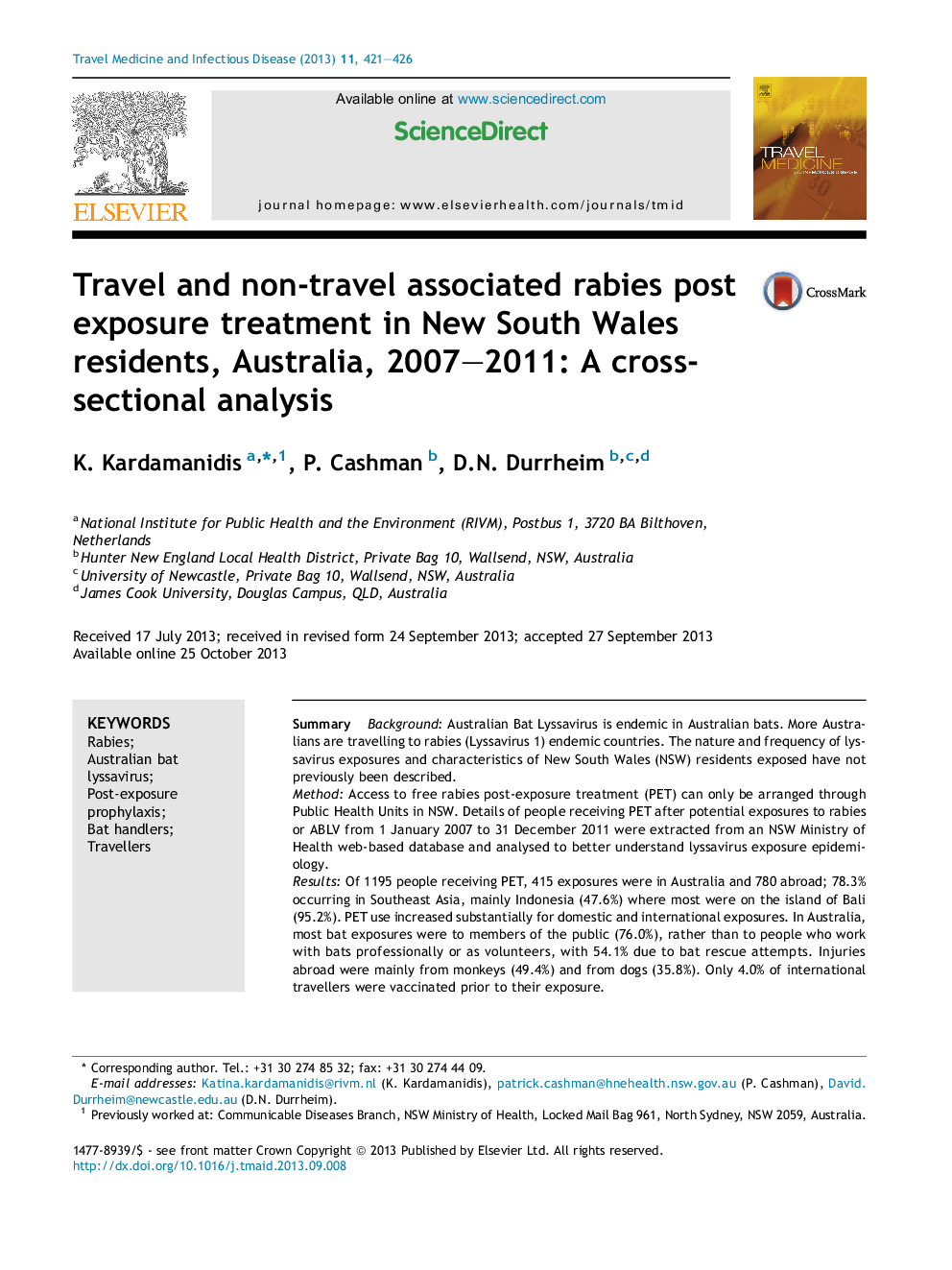| کد مقاله | کد نشریه | سال انتشار | مقاله انگلیسی | نسخه تمام متن |
|---|---|---|---|---|
| 3392887 | 1221298 | 2013 | 6 صفحه PDF | دانلود رایگان |

SummaryBackgroundAustralian Bat Lyssavirus is endemic in Australian bats. More Australians are travelling to rabies (Lyssavirus 1) endemic countries. The nature and frequency of lyssavirus exposures and characteristics of New South Wales (NSW) residents exposed have not previously been described.MethodAccess to free rabies post-exposure treatment (PET) can only be arranged through Public Health Units in NSW. Details of people receiving PET after potential exposures to rabies or ABLV from 1 January 2007 to 31 December 2011 were extracted from an NSW Ministry of Health web-based database and analysed to better understand lyssavirus exposure epidemiology.ResultsOf 1195 people receiving PET, 415 exposures were in Australia and 780 abroad; 78.3% occurring in Southeast Asia, mainly Indonesia (47.6%) where most were on the island of Bali (95.2%). PET use increased substantially for domestic and international exposures. In Australia, most bat exposures were to members of the public (76.0%), rather than to people who work with bats professionally or as volunteers, with 54.1% due to bat rescue attempts. Injuries abroad were mainly from monkeys (49.4%) and from dogs (35.8%). Only 4.0% of international travellers were vaccinated prior to their exposure.ConclusionsIncreasing rates of PET in travelling and non-travelling Australians emphasise the need for more effective communication about appropriate animal avoidance and the measures required if exposed. Opportunities for increasing pre-exposure treatment amongst individuals likely to be exposed should be promoted.
Journal: Travel Medicine and Infectious Disease - Volume 11, Issue 6, November–December 2013, Pages 421–426